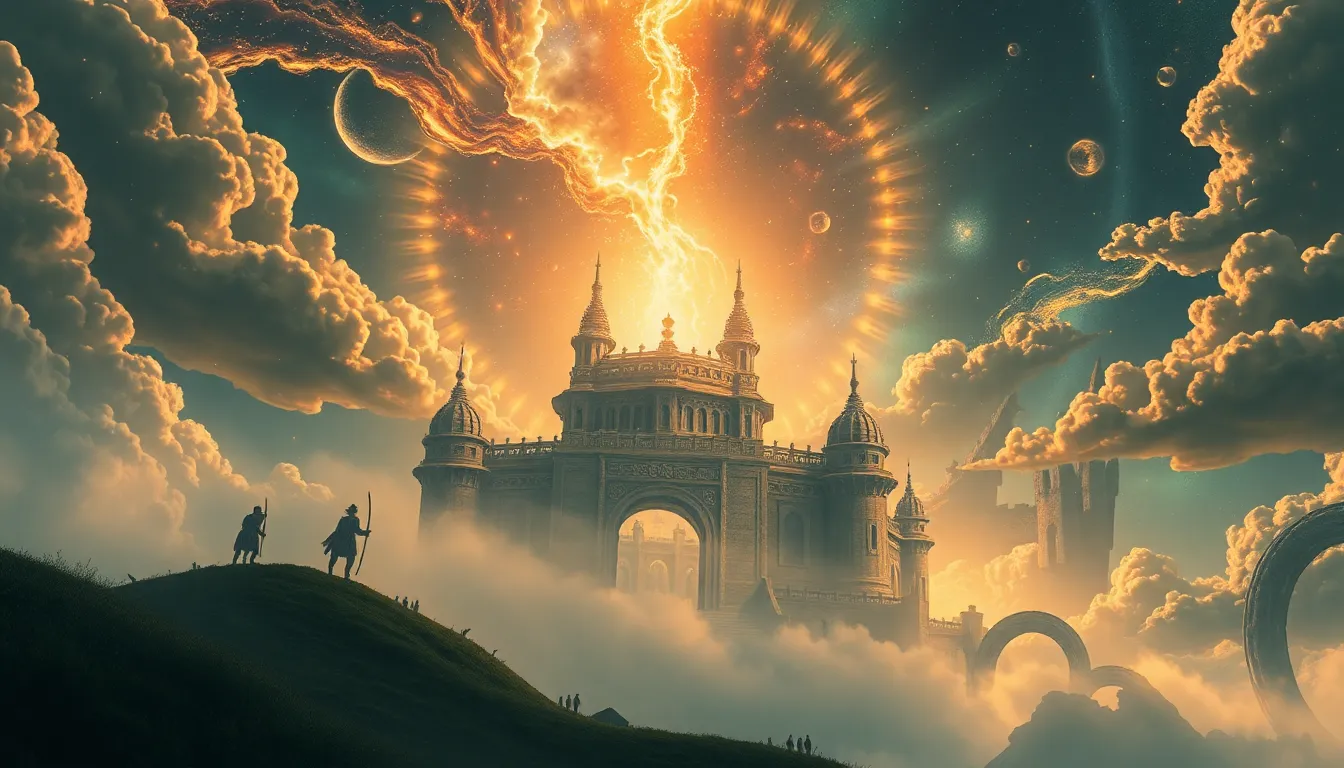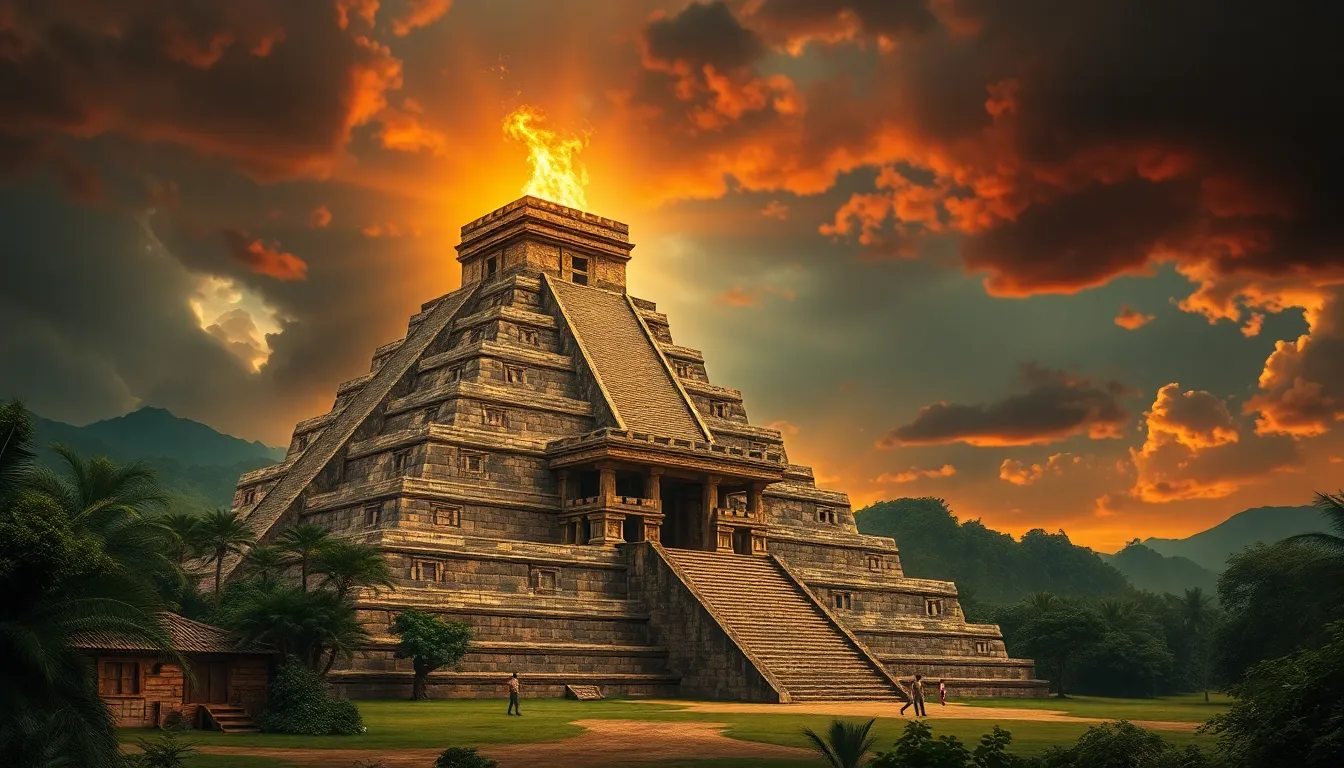The Kingdom of the Hidden Truths: Myths of Revelation and Discovery
Introduction: The Allure of Hidden Truths
The concept of hidden truths has fascinated humanity across cultures and ages. From ancient civilizations to modern societies, the allure of uncovering what lies beneath the surface of reality has driven exploration, inquiry, and artistic expression. Myths play a pivotal role in this narrative, acting as vehicles through which generations have sought understanding of their existence and the universe around them. They encapsulate the essence of humanity’s quest for knowledge, often intertwining truths with the fantastical, and inviting us to ponder the mysteries that remain hidden.
Defining the Kingdom of Hidden Truths
The metaphorical “kingdom” of undiscovered knowledge represents an expansive realm filled with possibilities yet to be uncovered. It is a landscape where questions abound, and answers remain elusive. In this kingdom, myths serve as both guides and barriers; they shape our perception of truth and reality, influencing how we interpret the world. Myths create a tapestry of narratives that inform our beliefs, providing structure to the chaos of existence and offering insights into the deeper truths of life.
Historical Context: Myths of Revelation Through the Ages
Throughout history, various civilizations have crafted myths that reflect their understanding of discovery and revelation. For instance:
- Prometheus: In Greek mythology, Prometheus defied the gods by stealing fire and giving it to humanity, symbolizing the light of knowledge and the pursuit of enlightenment.
- Pandora: The tale of Pandora, who opened a box releasing all evils into the world, illustrates the risks associated with seeking hidden truths.
The evolution of these myths from oral traditions to written texts marks a significant shift in how knowledge is shared and preserved. As stories were inscribed, the mythical narratives that once served as cautionary tales or inspirational accounts became foundational elements of cultural heritage.
Cultural Perspectives: Myths Across the Globe
Myths of revelation vary widely across cultures, reflecting unique societal values and beliefs. A comparative analysis reveals fascinating insights:
- Indigenous Myths: Many Indigenous cultures possess rich oral traditions that convey hidden truths about nature, spirituality, and community, often emphasizing a deep connection to the earth.
- Eastern Myths: In Eastern philosophies, such as Buddhism, the quest for enlightenment is portrayed through narratives that emphasize self-discovery and the illusionary nature of reality.
- Western Myths: Western myths often focus on the individual hero’s journey, highlighting themes of personal growth and the pursuit of knowledge through trials and tribulations.
Storytelling serves as a vital mechanism for preserving these myths, allowing societies to convey complex ideas and truths across generations.
The Science of Discovery: Myths vs. Reality
As we delve into the realm of discovery, it is crucial to distinguish between mythical narratives and the empirical methods of scientific inquiry. Science often challenges established myths, revealing truths that were once deemed impossible. Consider the following case studies:
- The Heliocentric Model: The transition from a geocentric to a heliocentric model of the solar system exemplifies how scientific revelations can overturn long-held beliefs.
- Germ Theory: The understanding of disease causation through microbes was once met with skepticism, challenging the myths surrounding health and illness.
These examples highlight the dynamic relationship between myth and reality, illustrating how scientific discovery can illuminate truths that myths may obscure.
The Psychological Aspect: Why We Create Myths of Truth
The human psyche is inherently drawn to storytelling, which serves as a framework for understanding the complexities of our experiences. Myths often arise from cognitive biases that shape our perceptions of reality. Factors influencing this phenomenon include:
- Pattern Recognition: Humans have a natural tendency to recognize patterns, leading to the creation of narratives that explain the unknown.
- Comfort in Certainty: Myths provide reassurance in the face of uncertainty, allowing individuals to navigate the complexities of existence.
This psychological need for narratives contributes to the proliferation of myths surrounding discovery and truth, as individuals seek meaning in their experiences.
Contemporary Myths: New Age Beliefs and Hidden Truths
In the modern world, new myths have emerged, often fueled by the rapid advancement of technology and the internet. These contemporary myths encompass a range of beliefs, including:
- Spirituality: New Age movements embrace the idea of hidden truths about consciousness and the universe, often drawing on ancient wisdom.
- Conspiracy Theories: The internet has facilitated the spread of conspiracy theories, which often present alternative narratives about significant events, challenging mainstream understandings.
The role of the internet in shaping and disseminating these myths is profound, as it allows for the rapid exchange of ideas and the evolution of beliefs.
The Journey of Discovery: Personal and Collective Paths
Each individual’s journey of discovery is imbued with mythic qualities, often marked by personal revelations that transform their understanding of the world. These journeys can be both solitary and collective:
- Personal Revelations: Moments of insight or epiphany often feel mythic in nature, reshaping one’s identity and beliefs.
- Collective Movements: Societal shifts, such as social movements or scientific breakthroughs, represent collective journeys toward uncovering hidden truths.
These narratives of discovery, both personal and collective, weave together the fabric of human experience, highlighting the profound impact of seeking knowledge.
The Future of Hidden Truths: Myths in the Age of Technology
As we move further into the digital age, the potential for technology to uncover or obscure hidden truths is immense. Emerging technologies, such as:
- Artificial Intelligence: AI has the capability to analyze vast amounts of data, potentially revealing truths that were previously hidden.
- Virtual Reality: VR can create immersive experiences that challenge our perceptions of reality, reshaping the myths we create.
However, with these advancements also come concerns about misinformation and the creation of new myths that may distort our understanding of truth.
Conclusion: Embracing the Unknown
In conclusion, the exploration of hidden truths through myths remains a vital aspect of the human experience. Myths not only provide insight into our past but also guide us on our ongoing quest for knowledge. As we embrace the unknown, it is essential to recognize that not all truths are meant to be revealed. The journey of discovery, enriched by both myth and reality, continues to shape our understanding of ourselves and the world around us.



